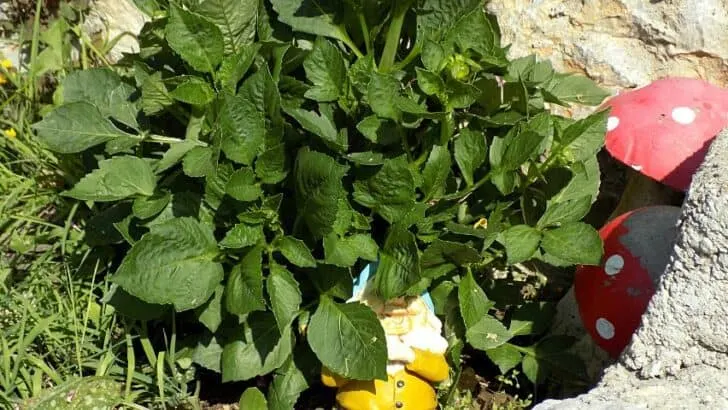One of my favorite plants for the interior window box is the dahlia. The bright green leaves are simply gorgeous, so imagine how upset I was when I returned home after a long weekend to find the Dahlia leaves curling.
I wanted to find out what was causing my dahlias to curl so I could help them and prevent the plants from dying off completely.
If you’ve ever wanted to know how to help grow a happy dahlia, you’ve come to the right place.
Table of Contents
Dahlia Leaves Curling
Dahlia leaves curl due to soil drying out, excessive temperature changes (high heat and below 50℉ temperatures), fungal infection of the roots and stem, and damage from being in a high-traffic area. Dahlia leaves curl as the plant cells shrink and die from water loss or dehydration-related stress.
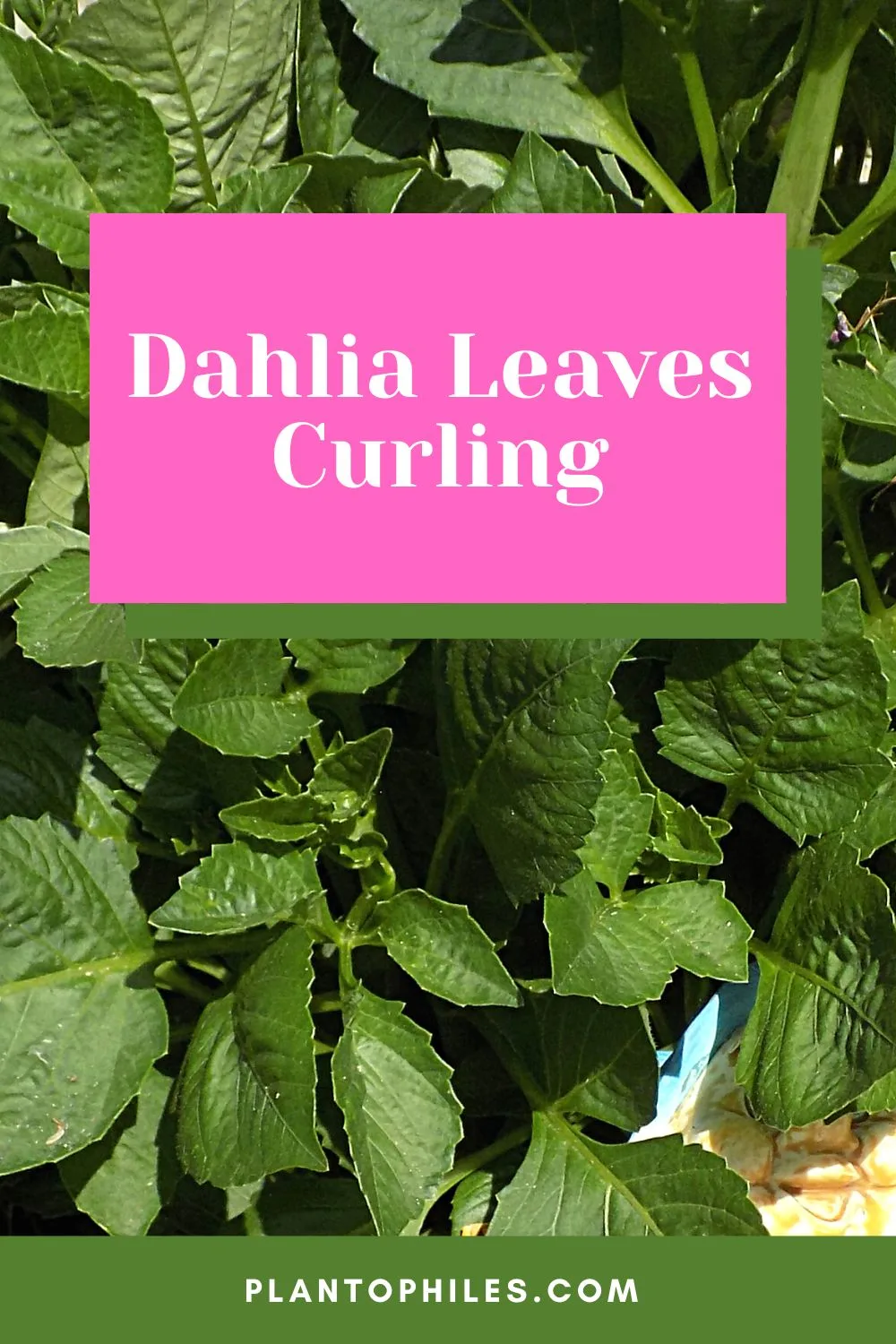
5 Reasons Dahlia Leaves Curl
Before I could treat my dahlias, I had to figure out what had caused the leaf curling.
If I treated the wrong issue, I might make matters worse, so I had to start by eliminating the possible causes of leaf curling until I found the actual reason.
Only then could I help save my poor dahlias.
1. Underwatering Dahlias
When dahlias lose moisture from the plant cell walls, the leaves begin to curl, so this was my first guess.
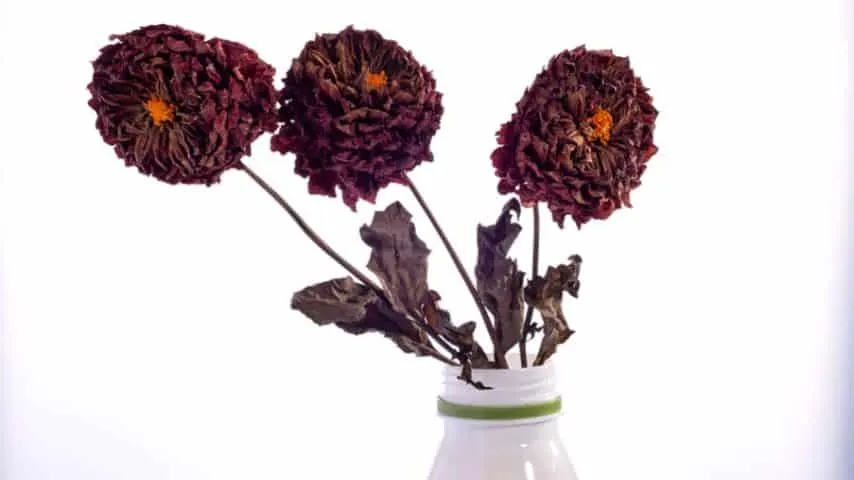
Of course, I had been keeping dahlias for a while, and I had installed a mini drip irrigation system to ensure a slow and constant supply of water to the root area without watering the leaves.
Dahlias love having a slow but steady water supply as they don’t want to drown, nor do they want to die of dehydration. When you check your dahlias for signs of underwatering, the best method is the finger test.
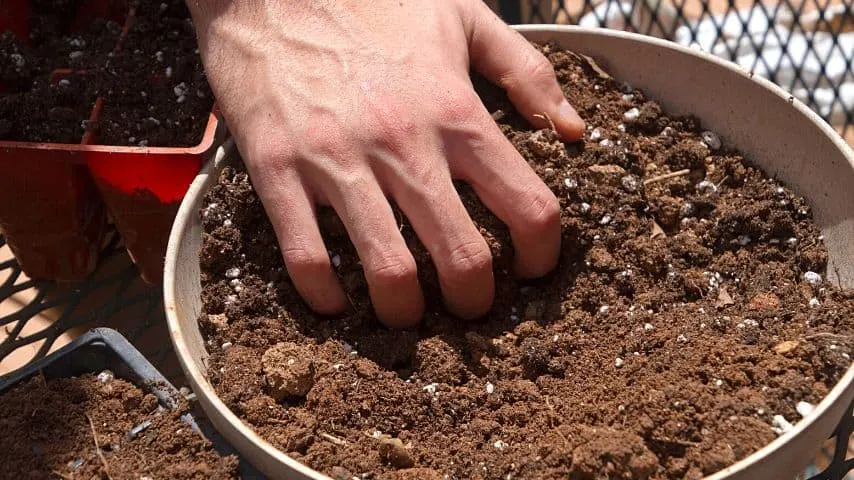
Stick your index finger into the soil, particularly near the dahlia’s roots. The soil’s top inch should be moist.
If you stick your finger in and don’t feel moisture by the time your finger is up to the first digit in the soil, you need to add water.
When watering dahlias by hand, ensure they get a good watering at least once or twice weekly. Use your finger in checking the soil’s water content before you have a go at watering again.
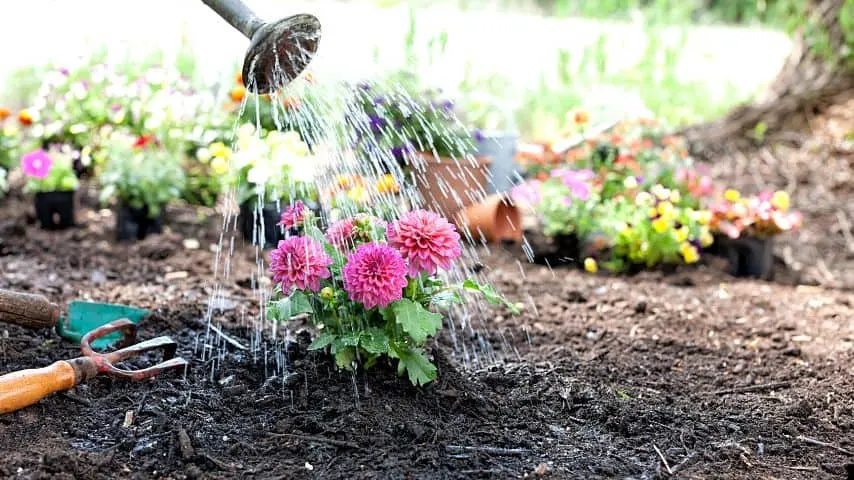
Too much water can lead to your dahlias developing root rot or drowning.
My dahlias weren’t dry, so this wasn’t the cause.
2. Overwatering Dahlias
I had been very careful with the amount of water my self-irrigation system was giving my dahlias, and it had been working well for weeks before the long weekend; however, I considered overwatering as a cause for leaf curling too.
Had my little sprinkler system malfunctioned and drowned the dahlias while I was away?
The finger test for the soil revealed the water content was normal, with a good level of dry soil near the top at the base of the dahlias but sufficient water within the first inch.
My dahlias weren’t soaked, so this wasn’t the cause either.
3. Fungal Infection of the Dahlia Roots
If a fungus or virus has managed to take hold of dahlia roots or any part of the plant, it can also lead to plant stress. The dahlia leaves may curl and discolor as a result.
So I carefully examined my dahlia stems, leaves, and roots. I even carefully cleared away some soil near the base of the dahlia to further check for signs of fungi.
Nothing. The dahlia stems and roots looked healthy and firm.
Clearly, fungi weren’t the problem either.
4. Sudden Temperature Changes Affecting Dahlias
Dahlias are quite sensitive to temperature changes, and even if they are kept indoors, temperature changes and extremes can negatively affect them, causing leaf curling.
When the temperature drops below 50℉ or rises above 100℉, the moisture content of the leaves becomes compromised by either freezing or boiling and causing cell wall damage, which results in the leaf curling.
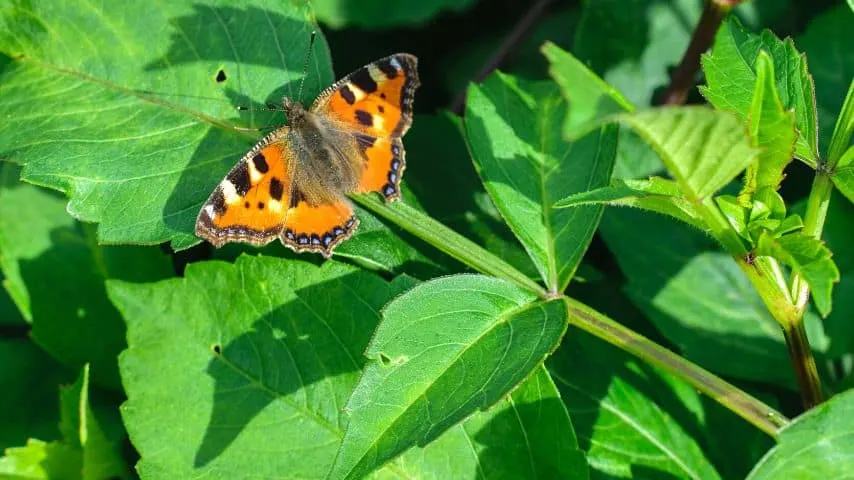
In a panic, I checked the local weather history online, but the temperatures had been mild and constant at about 65℉ the whole weekend, with evenings never dropping below 60℉.
So it wasn’t temperature changes that had caused the curling.
5. Increased Traffic Around the Dahlias
My friend had been house-sitting for me, and she had brought her two little boys with her for the weekend.
Quite by chance, as I was chatting to the elderly lady who lives next to me and is also a plant fundi, she mentioned that the two boys had played on the windowsill near the plants most of the weekend, waving at people passing on the street.
The neighbor asked if my plants were okay with having people moving around them, and I had to admit that there had been damage in the form of plant stress.
My dahlias had suffered leaf curl due to the two boys playing around the plants, and while they hadn’t broken any leaves, their presence had been stressful to the plants.
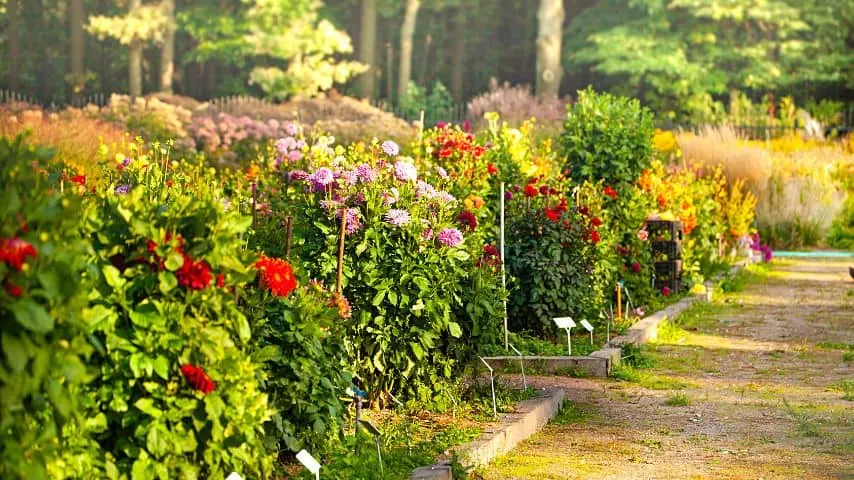
What to Do About Dahlia Leaves Curling
I was worried that my dahlias would not recover as their leaves had been quite curled. The nice neighbor advised me not to fret too much.
She suggested that I close the lace curtain in my window, keep noise and bright lights to a minimum, and just give my dahlias time.
It was a gamble, but my dahlias started to perk up after about a week of peace and quiet. I gradually started drawing the lace curtain back again, watered the dahlias as normal, and fertilized them with a low nitrogen fertilizer as soon as they started blooming.
About a month later, I fertilized again, and my dahlias looked better.
Frequently Asked Questions about Dahlia Leaves Curling
What can cause dahlia leaves to curl on a hot day?
Dahlia leaves can curl when the plant hasn’t been watered sufficiently or if the temperature rises above 100℉, causing dehydration and cell shrinkage in the leaves.
Should I remove dahlia leaves with leaf curl?
If the leaves have curled due to fungal disease, you should remove the affected leaves to prevent the spread of the disease. Removing the very top layer of soil around the plant is also a good idea to ensure that all fungal spores have been removed.
Conclusion Dahlia Leaves Curling
Dahlia leaves curl for the following reasons:
- Soil drying out
- Overwatering
- Excessive temperature changes
- Fungal infections
- Damage

Daniel has been a plant enthusiast for over 20 years. He owns hundreds of houseplants and prepares for the chili growing seasons yearly with great anticipation. His favorite plants are plant species in the Araceae family, such as Monstera, Philodendron, and Anthurium. He also loves gardening and is growing hot peppers, tomatoes, and many more vegetables.

